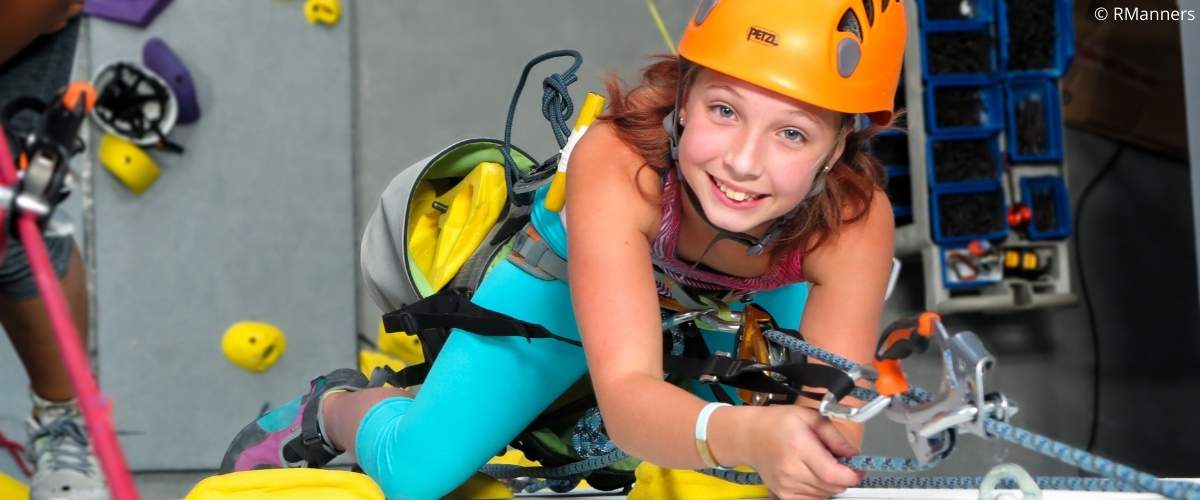Timing Is Everything: Age-appropriate Training For Kids

In our previous discussion about the long term athlete development model, we reviewed the history that led to the creation of the program. The goal of the LTAD model is to ensure the quality of sport and physical activity, and to keep athletes and/or participants engaged in sports and recreation for life.
Research in the field of physical development has shown that youth who develop specific fundamental movement skills have a better chance of staying active, especially if they have a positive experience. For example, if a child tries climbing and finds it too difficult because they have not learned basic movement skills, it could be a negative experience that stops the young athlete from continuing to try.
Active Start
Watching toddlers learn to move from crawling to walking, it becomes obvious that climbing is a fundmental skill. The popularity of climbing equipment in parks and school playgrounds supports this. This early stage of playground equipment and climbing on furniture would be considered an Active Start. Children often learn the effect of gravity with a few tumbles on playground equipment, giving them a respect for the consequences of falls.
What are the FUNdamental movement skills?

DODGE |

DRIBBLE |

CATCH |

THROW |

HOP |

SKIP |

JUMP |

KICK |

RUN |

CLIMB? |
FUNdamentals
During the second stage of physical development, called FUNdamentals, basic movements are further developed. This applies to youth between the ages of 6 to 9. Children are learning how to push and pull, how to hop over a foothold and more. Youth may or may not be interested in competing at this time, and it would be wise not to push the competitive aspect of climbing.
Between the ages of 6 to 8 years, a young person learns best by doing. Demonstrating how to tie a figure eight knot does not necessarily make it easier for the child to learn. Attention span is limited and distraction is always a possibility. Smaller groups and working in pairs can help with focus. Keeping instructions to short step-by-step statements supports young climbers. Youth at this age struggle with criticism and failure. Positive feedback, repetition, and building on success are essential to maintaining a positive experience for this age and stage.
There are a number of climbing games, most adapted from other sports, that can be used to bring a challenge and fun to movement development.
Learning to Train
In the Learning to Train stage around 9-11 years of age, competition becomes of more interest. This is a stage where youth begin to appreciate success and become more frustrated when things do not go as expected.
The body is still developing, so although young climbers are getting stronger, their bones are still growing. Injury to bones at the growth plate in this stage can lead to lifelong impacts. Tendons are often stronger than the bones and youth can more easily damage bone than tendon tissue. Asking youth to train with weights increases the risk of injury.
Remember, there are a number of suggestions in the Long Term Athlete Development PDF created by Climbing Escalade Canada.
Sport specialization is often not recommended even in these early competition years. Helping young people continue to develop movement skills other than just climbing skills is helpful for long-term engagement in recreation and sport.
Training to Train
As youth move into the Training to Train stage of development (ages 11-15 years), kids are moving through puberty. The body is changing in many ways during this time, and so is their emotional and mental development.
Physically, the limbs are lengthening and their center of gravity is moving. This is a fantastic time to start focusing on developing core and stability in movement.
Coaches may find it helpful to introduce young athletes to more individually-focused training programs and implement restorative training, mindfulness, and journal exercises. Check out some training ideas here:
- Six Yoga Poses for Climbers (Climbing Magazine)
- Yoga Nidra - The "REST" Component in Sport (SportsYoga.ie)
- 8 Ways Journaling Can Improve Performance (Daily Athlete)
Training to Compete
As youth become adults, they move into the Training to Compete stage. I suggest that you ensure you offer programming for young climbers that has a more recreational approach, as well as a more advanced team option.
Many young people in the late teens would love to work in a climbing facility, so developing their skills in program delivery and routesetting can keep young people inspired to climb even if they step away from competition.
The "late teens” stage is where athletes train longer and harder. With the body nearing the end of puberty, they can handle more dynamic movement and higher resistance on the joints. However, it is still not appropriate to suggest climbing with weight.
Most have completed their height growth and have stabilized their center of gravity, taking them past the clumsy stage and into the stage of learning how to stay tight on moves. At this stage they should be quite comfortable with all forms of climbing; top rope, lead, bouldering, and perhaps speed climbing.
It is prudent for coaches to watch their athletes for any unhealthy attitudes about food or body image.
Emphasis in training is on mental and emotional control and sequencing. This is also a stage of hyper-awareness about body image and comparison to other athletes, so it is crucial to check in with kids on these issues.
About The Author
 Heather Reynolds is a licensed kinesiologist, High Five Trainer (Sport, PCHD), CEC Climbing Coach, and CWA Climbing Wall Instructor Certification Provider Trainer. She blends her knowledge of movement, physiology, and education to develop a multitude of successful climbing programs designed to support and engage youth. Having worked with youth for over 30 years as a recreation instructor, leader and educator, Heather supports the values and expertise available in the High Five Program, bringing quality assurance to youth-based sport and recreation programming.
Heather Reynolds is a licensed kinesiologist, High Five Trainer (Sport, PCHD), CEC Climbing Coach, and CWA Climbing Wall Instructor Certification Provider Trainer. She blends her knowledge of movement, physiology, and education to develop a multitude of successful climbing programs designed to support and engage youth. Having worked with youth for over 30 years as a recreation instructor, leader and educator, Heather supports the values and expertise available in the High Five Program, bringing quality assurance to youth-based sport and recreation programming.
